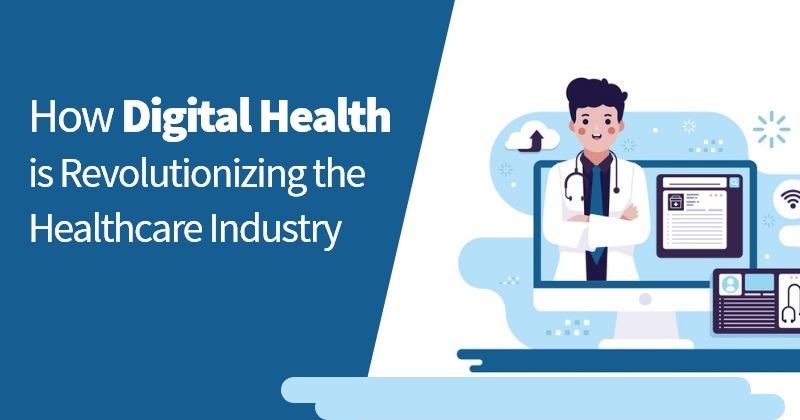The digital health care market is estimated to reach a valuation of around Rs.485.43 billion by 2024. With an expansive penetration of the internet, this digitization of healthcare services is expected to increase further, enhancing the overall scope for affordable care.
However, before understanding how such services benefit individuals requiring medical care, one should gain an in-depth understanding of what is telehealth and its expected reach.
Table of Contents
Telehealth services: Know the basics
Telehealth refers to a specialized form of healthcare, which is extended to patients through telephonic or digital media. In its inception, the telephone was the only contactless mode for providing medical care services. However, with the evolution of the internet and other technological advancements, doctors can now connect with their patients through video calls, text chats, and more.
Part of knowing what telehealth comprises also includes understanding how it is beneficial for medical professionals, as well as those in need of healthcare.
Why are telehealth services a rage today?
Telemedicine, a critical component of what teleheath is composed of, does not benefit only the patients or the doctors, but both the parties suitably. Here are some features that this digital mode of healthcare offers –
Ensures access to quality healthcare
One of the biggest challenges that the Indian healthcare industry faces is the inability to extend quality care to individuals residing in remote or rural areas. Most such villages remain without even a single well-maintained medical care centre.
Residents of these areas thus often succumb to easily preventable or treatable conditions. In such situations, telehealth can be a suitable solution for easy access to healthcare facilities.
With mobile phones and internet connectivity prevalent today, such individuals can instantly connect with some of the best medical specialists when in need. Physicians can visually check and diagnose patients through the video calling facility, prescribing the necessary drugs to alleviate discomfort and/or pain, thus helping with the overall health and wellness of residents.
Cuts down time consumption in seeking healthcare services
Unlike face-to-face consultations, individuals do not need to travel over long distances to consult with their primary care physician under telehealth services. Moreover, it saves one’s time by avoiding long queues. Instead, care seekers can connect with physicians almost immediately to discuss their health problems via telemedicine models.
Allows remote monitoring of patients
A part of what is telehealth and what makes it effective also includes the ability of doctors to monitor their patients more closely. With several mobile applications and portable devices, physicians can keep close watch over a patient’s vitals, such as pulse rate, blood pressure, and more. Such technology also provides adequate functionality to ensure optimum patient compliance to the lifestyle and medication recommendations.
While most patients normally fail to stick to a doctor’s prescribed drugs for the specified period, remote monitoring ensures that they do not deviate from the treatment course set.
Cuts operational cost for clinics
A clinic providing telemedicine services can also save a substantial amount on overhead expenses as opposed to another clinic providing physical consultation facilities only. It is because the latter would need to reserve space for various doctors to receive their patients against a set cost. Additionally, hiring skilled staff would also be necessary to handle all the individuals coming in for in-person consultations.
Convenient reference of patient files
Telehealth services have also allowed better discussion of more complicated cases among practitioners in the professional healthcare community. For instance, one’s primary caregiver can transfer files and test reports to specialists to seek the latter’s opinion regarding treatment or other help. Thus, telemedicine bridges the gap in the medical community, which, in turn, improves the prognosis efficiency for those in need of care.
Now that you know what is telehealth, it is also prudent to know how to finance such advanced healthcare services or any other medical care availed. With an increasing cost of medical care, money can be a concern, thus bringing in the need for financial instruments like the Bajaj Finserv Digital Health EMI Network Card.
What are the benefits and features of a health card?
Individuals availing a health card can look forward to the following features and benefits –
- Users can convert medical bills of up to Rs.4 lakh into monthly instalments for easier affordability. You need to make a one-time payment of Rs.707 only for instant card availability. Such payment for non-insta health cards is lowered to Rs.589.
- The tenure for the repayment of financing availed via a health card ranges between 3 and 24 months.
- Your health card will also cover the medical expenses incurred by your parents, siblings, children, and spouse, providing a comprehensive financing option. Thus, one does not need to avail separate cards for every single member in the family.
- If you intend to utilise the various benefits of such a card, you can visit any one of the 5,500+ network clinics, hospitals, and other such facilities. These outlets are spread across over 1,000 cities in India.
- The card can help an individual fund more than 800 essential and non-essential medical procedures.
Further, depending on the outlet you approach, you stand a chance to earn attractive cashbacks and discounts. These benefits can help individuals afford quality healthcare without overburdening their finances. Apply for a health card online and check the pre-approved limit you are eligible to receive for quick financing.
Also Read: Know the Perks and Benefits of Using a Credit Card





